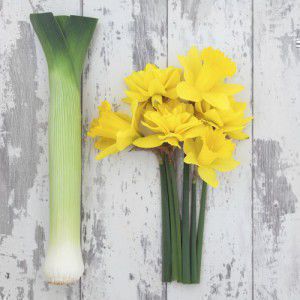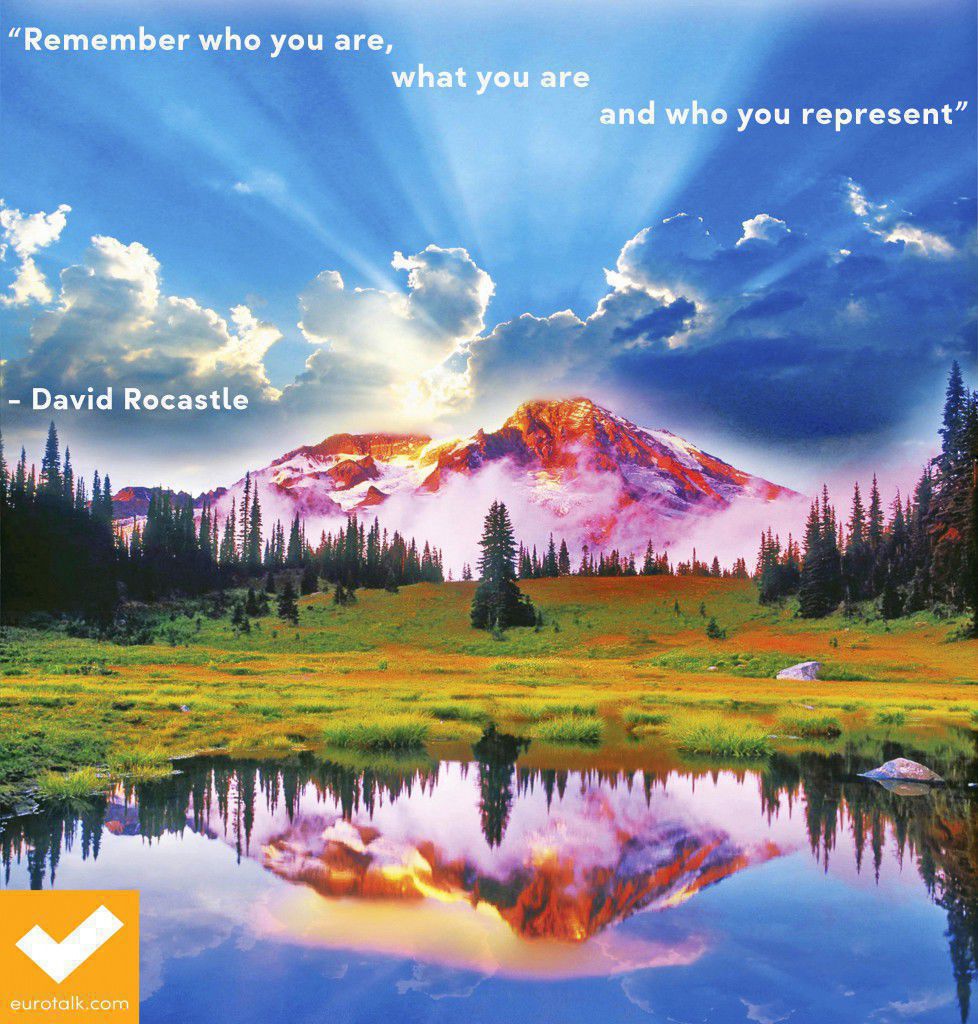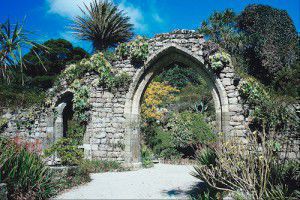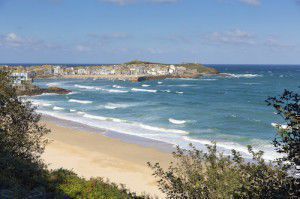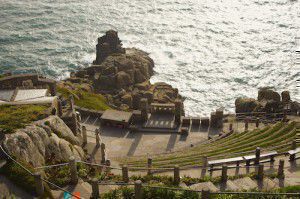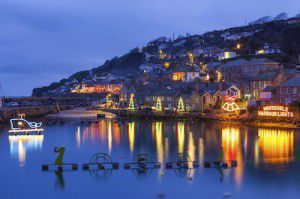Language of the week: Welsh
Did you know that Welsh is now one of the 111 languages available to learn with uTalk? And as it was Saint David’s Day yesterday, we’ve chosen Welsh as our language of the week.
1st March each year is when the Welsh celebrate the patron Saint of Wales, who died on that day in or around 569 AD. People all around the globe mark the day by wearing the national emblems, either a leek or a daffodil, and there are parades and various music and cultural events to celebrate the holiday.
St David was buried in the Cathedral of St David’s in Pembrokeshire, which has now become a popular place of pilgrimage.
Here are some fun facts and figures about the Welsh language and Wales (Cymru):
- Arsenal footballer Aaron Ramsay, and singers Connie Fisher, Rhydian Roberts, Cerys Mathews and Duffy all speak Welsh, as do actors Ioan Gruffudd and Matthew Rhys.
- The Welsh alphabet does not include the letters J, K, V, X and Y.
- The Welsh Motto is: ‘Cymru am byth’ (pronounced come-ree am-bith), which means Wales for ever, or long live Wales.
- 21% of the population in Wales speak Welsh, and 20% of primary school children are taught in Welsh.
- The village of Llanfairpwllgwyngyllgogerychwyrndrobwllllantysiliogogogoch is in the Guinness Book of Records for having the longest place name in Britain. Anyone want to have a go at pronouncing it?!
- The national animal of Wales is the Dragon, which appears on the country’s flag.
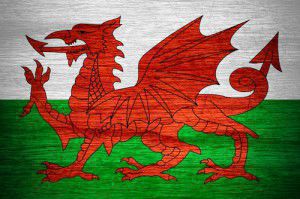
- Welsh is a Celtic language and was one of the earliest written languages in Europe.
- Since 1865, there’s been a Welsh colony in Patagonia, Argentina. The people there speak Patagonian Welsh, which is different to the Welsh spoken in Wales. This year is the colony’s 150th anniversary.
- Wales is said to contain more castles per square mile than any other country in the world.
- A traditional dish in Wales is laverbread, which is made from seaweed (have you ever tried it?)
Did you celebrate St David’s Day yesterday? Tell us about it in the comments!
Quote of the week: 28 Feb 2015
“Remember who you are, what you are and who you represent.” David Rocastle
For more like this, find us on Pinterest or We Heart It.
Embed This Image On Your Site (copy code below):
The benefits of being multilingual
Today, we’re welcoming back EuroTalk blogger Kirsty with some of the biggest benefits of learning other languages.
How has knowing more than one language helped you? Let us know in the comments!
1. It makes you cleverer
It has long been thought that learning another language, and being competent at it, indicates a high level of intelligence in individuals. Recently this has been proven, with studies on bilingual children showing they were much more developed than their peers, as well as a similar link being drawn between the results of teenagers at school and being able to speak two languages. This means your language learning is actually making you smarter!
2. It can prevent ageing and disease
 People who study an additional language have also been shown to have ‘younger’ brains than would be expected for their age. Cognitive ability, or how effective your brain is at functioning, is much higher in people over sixty that can speak two languages than those who can only speak one. Essentially language learning can prevent the likelihood of forgetfulness and ‘getting slower’ in old age. Learning a second language can also make your brain more resistant to diseases such as dementia and Alzheimer’s. A study conducted on a group of elderly people who spoke both Spanish and English demonstrated that they typically developed symptoms of Alzheimer’s much later than those who only spoke English. Who knew that learning a language might actually be able to prolong your memory and your life?
People who study an additional language have also been shown to have ‘younger’ brains than would be expected for their age. Cognitive ability, or how effective your brain is at functioning, is much higher in people over sixty that can speak two languages than those who can only speak one. Essentially language learning can prevent the likelihood of forgetfulness and ‘getting slower’ in old age. Learning a second language can also make your brain more resistant to diseases such as dementia and Alzheimer’s. A study conducted on a group of elderly people who spoke both Spanish and English demonstrated that they typically developed symptoms of Alzheimer’s much later than those who only spoke English. Who knew that learning a language might actually be able to prolong your memory and your life?
3. It allows you to explore more of the world
Alongside the multiple health benefits of language learning, speaking a second language also allows people to explore the world in a different way. Whilst anyone can visit a country it is the people who can speak the language who truly experience the culture. Basic competency in the language makes the locals more open to helping you and maybe even pointing you in the direction of the best places to visit away from the tourist hot spots. It is these ‘little gems’ that will be the part you remember most from your holiday, from the little hidden coffee shop in Rome to the underground bar in Paris.
4. It opens up new opportunities
There are six million people on earth, so why limit yourself by only speaking one language? New friends don’t just have to come from the same town, or even country, as you live in, but can come from all over the world. The easiest way to gain new friends across the world is to get a pen pal, and in the internet age you don’t even have to pay for stamps! There are lots of good websites that will set you up with a pen pal that speaks the language you’re learning, so why not put your new found language skills to use, make friends and learn even more.
What benefits of learning a second language have you discovered? Let us know!
Kirsty
So you want to learn Spanish?
Starting to learn Spanish has been an amazing journey. So far, the language and the people are really interesting, and it’s nice to know that a large population of Americans can speak the language. After long hours of practice, I am sitting here writing a post, while listening to my favorite Spanish rap songs.
Spanish class helped me in some ways and has hurt my interest in others. This was due to the grammar, and also we weren’t actually speaking. As much as I love doing grammar workbooks and vocabulary quizzes, I was more interested in sounding like Don Juan seducing girls.
 Spanish is a great language and it has so many benefits, the first being that by speaking the language you can talk to a much larger portion of the world. Spain, Colombia, and Buenos Aires are filled with a lot of activities and people to talk to. Something that most people might not know is that, by speaking Spanish, you can also talk to older generation Filipinos and people from Israel, Greece, Turkey, Yugoslavia, and Bulgaria. On top of this, after Spanish, Portuguese can be acquired with half of the work already done.
Spanish is a great language and it has so many benefits, the first being that by speaking the language you can talk to a much larger portion of the world. Spain, Colombia, and Buenos Aires are filled with a lot of activities and people to talk to. Something that most people might not know is that, by speaking Spanish, you can also talk to older generation Filipinos and people from Israel, Greece, Turkey, Yugoslavia, and Bulgaria. On top of this, after Spanish, Portuguese can be acquired with half of the work already done.
I love the pronunciation for Spanish. You can be fairly understood without going through the work that a French student would go through. Of course, the hardest thing is rolling your ‘r’s, but don’t worry. It isn’t too serious and Spanish speakers can understand you without it. The pronunciation won’t take very long to master compared to other languages. That’s one of the benefits of Spanish.
After pronunciation comes vocabulary. This is easier than other languages due to the similarity of Spanish and English. We have a lot of cognates, like la sofa becomes ‘sofa’, or los pantalones becomes ‘pants’.
Spanish grammar isn’t really that bad, people make it seem a lot harder than it is. I’ve heard that Arabic, Hungarian, and Latin have intense grammar that makes Spanish look easy. That’s because Spanish is so similar to English. It only has a couple of additions, and most of the sentences can translate back to English and still sound comprehensible. One hard step is learning how to conjugate verbs. Past, Present, Future, Conditional, Imperfect, and the dreaded Subjunctive. All verbs have different forms that you must learn, but thankfully, most follow the same pattern. In a sense, it’s just more vocabulary disguised as grammar.
The hardest rule is differentiating between Subjunctive and Indicative forms. For example it stresses the ability to know the difference between the following sentences: We always eat after the class ends, and We are going to eat after the class ends. In Spanish, those sentences are different and it is up to you to memorize the difference along with the verb conjugations. Fun, right? Well it actually isn’t that hard. It just takes time to get the hang of it.
Spanish is an easy language for English speakers, however there is one harsh reality. Learning a language isn’t easy. It takes hours of work and practice, and sometimes we overestimate how hard it actually is. We create excuses for not learning the language. That is why it is important that you have the right motivation for learning a language. Knowing about the steps above will give you a heads up for Spanish, but if you don’t have the right motivation, you will set yourself up for failure. I have faith in your language learning experience. Use it wisely, young Padawan.
Ray Jones
Read more from Ray on his blog at themodernlingo.com.
—
Want to join the EuroTalk blogging team? We’re always keen to hear from language enthusiasts with something to share. Email liz@eurotalk.com for details.
10 reasons to visit… Cornwall
With St Piran’s Day approaching fast, what better time for a blog post on why to visit lovely Cornwall? Despite the occasionally severe weather and lack of phone signal, everyone who’s ever been to Cornwall seems to love it, and here (in my opinion) is why:
1. The Isles of Scilly
Situated 30-odd miles off the mainland, this archipelago boasts its own microclimate of tropical plants and pearl-white beaches. A network of ferries connect the inhabited (and some of the uninhabited) islands, making daily dashes across the turquoise waters. If you’re there for a week, it’s worth taking a new ferry trip each day, as all the islands have quite different scenery, but if you’re just on a day trip from the mainland you might want to join the crowds in the Tresco Abbey Gardens, a stunningly maintained collection of exotic plants in a vibrant setting. Don’t forget to meander down to the corner of the Gardens know as ‘Valhalla’, where you will find a graveyard of figureheads salvaged from Scilly wrecks.
2. Pasties
I just said that to get your attention: although the Cornish Pasty is definitely a wonderful creation, and a very famous Cornish export, it’s by no means the only food on offer. Try to sample some other local delicacies during your trip, such as saffron cake, clotted cream (preferably in the form of a cream tea), Yarg cheese, mead wine, local beers, hevva cake, crab sandwiches, fudge, fairings, and lots of freshly caught fish.
3. Bodmin Moor
Contrasting with the fabulous white beaches are the wild moors which inspired Daphne Du Maurier’s ‘Jamaica Inn’. Great yellow, gnarled expanses dotted with abandoned engine houses and mining debris, the moors are also home to a huge range of archaeological treasures from the Neolithic, Bronze and Iron Age. You almost can’t turn around in Cornwall without stumbling over a barrow, hill fort, stone circle, cist or coit – an archaeologist’s heaven.
4. St Ives
You can’t really visit Cornwall without visiting St Ives, and if you go to St Ives you’ll understand what it was that inspired such great artists as Barbara Hepworth, Peter Lanyon, Bernard Leach and Alfred Wallis, as well as writers like Virginia Woolf (whose famous Lighthouse lies a stone’s throw away from the town). St Ives has the perfect combination of azure sea, white sand and tiny pastel-coloured cottages crammed together along crooked lanes. Nowadays, it is home to the Tate Modern, stunningly housed in the old gasworks, as well as to numerous private galleries and the hidden gem that is Barbara Hepworth’s walled sculpture garden.
5. Festivals
Cornwall loves an excuse to celebrate, and there are plenty of local and international festivals celebrating music, food and – of course – boats. For May Day, go to Padstow for Obby Oss Day, where the town splits into two (the red and the blue) and each side dances through the street after a wooden horse (the Oss), welcoming the spring with their May song. For New Year, dress up in your finest fancy dress and spend the evening dancing through the streets in the world famous St Ives (or the slightly less famous, but no less fun, Looe). And in June spend a day or two at the Sea Shanty Festival in Falmouth, trailing from one pub to the next and hearing a different shanty group (some coming from as far away as Brittany) in each one.
6. Fishing, sailing and surfing
Whether you’re a pro or an amateur, there’s great surf to be had in Cornwall and plenty of surf schools to help you along. Sailing and fishing trips are also readily available (ever wanted to try shark fishing?) and plenty of local pubs and restaurants serve the catch of the day. Gig racing is another popular sport in Cornwall, with lost of coastal villages having their own club and the World Pilot Gig Championships taking place on the Isles of Scilly in May each year.
7. Minack theatre
Visible from the sea, the Minack amphitheatre is open from May to September each year, staging plays against the stunning backdrop of cliffs and ocean. You’ll find yourself directed to a seat carved into the cliff (bring a cushion and some rugs for warmth) from which you look down on the stage at the very edge of the cliff – walk the Coast Path around here and you’ll see the tiny, rickety cliff path the actors use when they go backstage. Although atrocious weather can lead to a play being called off, in general the natural elements add a special dramatic effect to the performance, so if you ever get a chance to see The Tempest there on a stormy night, go!
8. South West Coast Path
Whether you have a few weeks spare to complete the whole trail around the Cornish coast, or just a few hours to do one of the shorter walks, it’s worth factoring a coastal walk into your trip. The coastline changes dramatically all around Cornwall, from the barren scrub of Land’s End to the high cliffs of Bude, to the pretty fishing villages of Coverack and Cadgwith. There are plenty of campsites and inns to stay in along the way, as well as endless beaches to go for a paddle and bathe your sore feet.
9. The Mousehole Lights
Each year over Christmas and New Year, the tiny fishing village of Mousehole decks itself out in the most impressive light display. Go there of an evening and wander around the miniature streets, spying giant Christmas puddings, Loch Ness Monsters, whales, bells, candles and silhouetted ships spreading from the harbour all the way up the hill. Mulled wine and apple juice are available in the streets, and most of the art galleries and shops stay open late for last-minute Christmas shopping.
10. Feeling that you’re somewhere a little bit different
Cross the border and you’ll start to get that pleasant feeling of being in a slightly foreign land. Cornwall has a very strong sense of identity and it’s very proud of its culture, as you’ll notice from the enormous number of Cornish flags flying in place of the St George’s Cross. Although you might not be lucky enough to hear anyone speaking Cornish (speakers are still a rarity, although it’s not hard to find a Cornish language class if you want to), a little smattering of words won’t go amiss if you want to figure out some of the place names. For example, anywhere beginning ‘Tre’ (which is basically everywhere in Cornwall) is going to be a village and anywhere with ‘porth’ in it is likely to have a harbour. If you want to learn a few more Cornish phrases, get our uTalk Classic Cornish. Or you can try a few words for free on our website.
Nat
